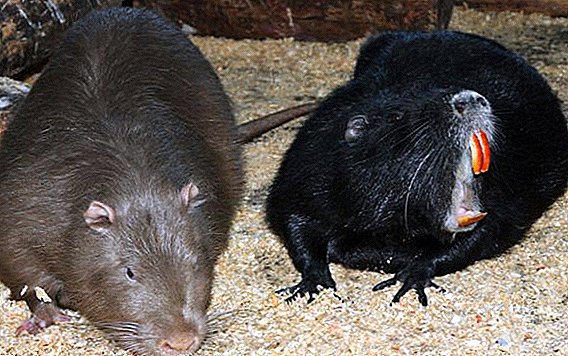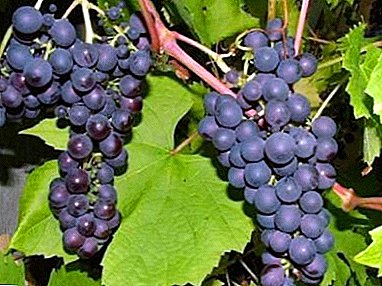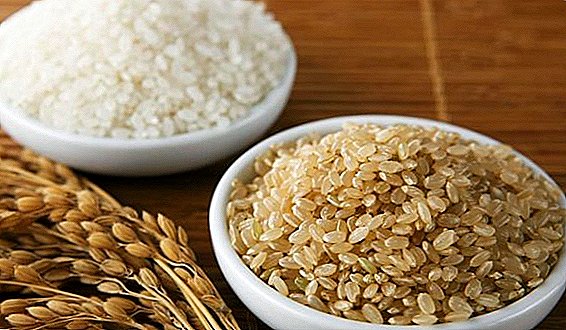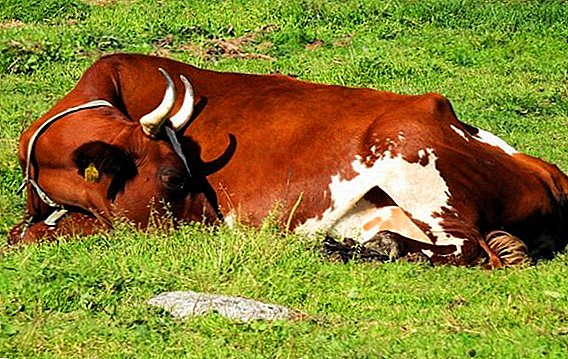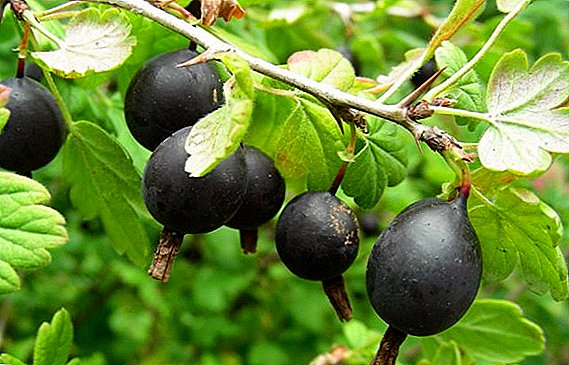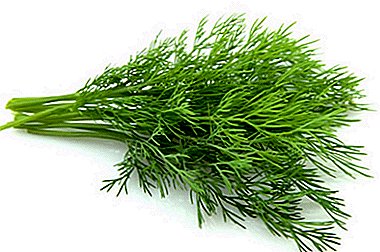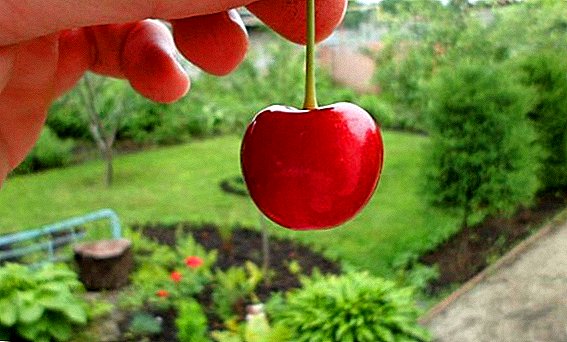 Juicy and tasty berries of sweet cherry bring in the summer not only pleasure from the use, but also huge advantage. There are many varieties of this berry, and they all differ in taste, color and size. Large-fruited sweet cherry "Vasilisa" has the greatest fruits of the existing varieties on the market today. In order to get the maximum yield, you need to know some of the features of "Basilisa" and care for it.
Juicy and tasty berries of sweet cherry bring in the summer not only pleasure from the use, but also huge advantage. There are many varieties of this berry, and they all differ in taste, color and size. Large-fruited sweet cherry "Vasilisa" has the greatest fruits of the existing varieties on the market today. In order to get the maximum yield, you need to know some of the features of "Basilisa" and care for it.
Selection
This large-fruited variety of sweet cherries was bred by Ukrainian breeders. The place of his birth is Artyomovskaya Experimental Gardening Station, where he was born thanks to the efforts of the honored agronomist of Ukraine LI Taranenko. The basis for getting Vasilisa cherries are varieties of Donetsk Ember and Donetsk beauty.
Check out the varietal characteristics of the cherries "Pink Pearl", "Farewell", "Valery Chkalov", "Yulia", "Favorite Astakhova", "Rossoshanskaya Gold", "Franz Joseph", "Iput", "Revna", "Krupnoplodnaya", "Adeline".
Description and characteristics
The tree itself is quite beautiful, especially during the flowering period. But the greatest interest is the fruits that are quite large for this culture size.

Tree
Cherry "Vasilisa" is very vigorous - without forming it grows up to 4 m in height. Like all sweet cherries, this tree has a straight beautiful trunk with brownish bark and a rounded crown. The shoots branch well and are somewhat bent in an arc.
The foliage is saturated dark green. The leaves are glossy, rounded egg-shaped.
Find out if you can grow a sweet cherry from a stone.
Fruit
Juicy stone-fruit fruits weighing 11-14 g are formed on the tree. These berries have a glossy shiny peel of rich scarlet tones and dense fleshy flesh. Their bones are small and easy to separate.
Sweet, with a wine flavor and a pleasant smell, the fruits have high taste (4-4.5 points out of 5). The shape is a bit like rounded hearts.

Some features of the variety
The variety "Vasilisa" has other characteristics.
Winter hardiness and disease resistance
This sweet cherry tolerates winter well. But since her flower buds are not resistant to cold, then to the north of the Volgograd region, her growing is useless.
Cherries are much more resistant to moniliasis and coccomycosis than cherries, and from insects it can be affected mainly by cherry fly larvae.
Did you know? Now in Russia, winter-hardy varieties of cherries are bred, which bear fruit in a fairly cold climate for them. "Oryol pink", "Poetry" and "Kid" can withstand the winter cold to -37 ° C. And these are not the only existing varieties that can be grown in the central part of Russia. The undoubted leader among them is considered "Fatezh"which, in addition to high winter-hardiness, is quite productive and possesses excellent taste qualities (4.7 points).

Pollinators
The culture is self-infested and it needs pollinators, so it is not recommended to plant a tree one by one. Good varieties of pollinators for Vasilisa are the following cherries: Annushka, Aprelka, Bagration, Melitopol Early, Valeriy Chkalov, Donetskiy Uglyak, Burlat, Valeria, and Priusadebnaya "and other sweet cherries with red berries.
Ripening period and yield
It is a medium cherries sweet cherry. Her berries are harvested in June, and if summer is delayed and cold in June, they can ripen in early July.
A young seedling begins to bear fruit in the second year after planting, but its harvest depends on the climate, soil composition, and care. The yield of adult plants ranges from 25 to 50 kg per tree.
Familiarize yourself with the beneficial properties of sweet cherry fruits.
Transportability
The fruits of this large-fruited sweet cherry, due to its dense pulp, tolerate transportation quite well. This, together with an excellent presentation (large size of stone farms), makes it promising for sale.

Direction
Sweet cherries can be used both fresh and canned. Moreover, tasters rated canned fruits higher than fresh ones (4.8-5 points). It makes an excellent compote, jams are prepared, jam and other jams (even without the use of sugar).
It is also closed in its own juice, syrup or marinated. Sweet cherries are added to fruit salads and desserts, used as a filling in pies and dumplings. Berries also take as a basis for the preparation of fruit wines (liqueurs) and liqueurs.
Cherry juice from the fruits of this variety does not darken and has a beautiful red color. In addition, it has an expectorant effect and is useful in respiratory diseases.
Learn how to make cherry jam with stones, white cherry jam, sweet cherry compote and other ways to prepare sweet cherry for the winter.
Growing conditions
Trees of this variety love the soil with an increased level of moisture. Light medium loamy or sandy loam soils are excellent. Not so suitable soil improves, adding sand or clay as needed. Lime is added to the acidic soil.
Sweet cherries are preferably planted in places well lit by the sun. It should also be noted that this fruit tree does not like areas blown by the wind. For landing you need to choose a quiet and not prone to drafts place.

For normal development, each tree needs enough free space around the trunk. Therefore, you should not plant trees too close to each other (the distance should be 2-4 meters). If groundwater is located close to the surface and will be close to the root system, then you need to worry about drainage and build a mound.
Important! Particularly unsuitable for cherry is rubbly soil, as they are too dry for the fruit tree.
Landing rules
When planting cherries "Vasilisa" it is important to adhere to the following rules:
- The soil for planting is prepared in the fall. During the digging of the land, 8-10 kg of manure or compost, as well as complex mineral fertilizer are introduced (about 200 grams per 1 square meter of land);
- pits for planting are dug at intervals of about 4 meters from each other and from the rest of the trees in order to prevent strong shading by the branches during growth;
- each landing pit has a width of about 70 cm and a depth of 50-60 cm. The walls are made straight without narrowing to the bottom;
- In each dug hole, compost or humus is placed to feed the roots of the young tree, and a support is placed, to which the seedling is tied up for support;
- in order not to deepen the root neck, the seedling is raised by 5 cm;
- then the tree is well watered, tamped into the soil, and made mulching.
How to plant a sweet cherry: video
How to care
In order to always collect a good crop, for the cherry "Vasilisa" should be properly maintained.
Watering
Variety "Vasilisa" needs watering, especially during the fruit set (May), in hot weather and before the onset of the cold period. Good watering should moisten the soil not less than 30 cm deep. Before the onset of frost, water consumption is almost doubled.
It is not advisable to carry out watering directly under the tree. Gardeners recommend digging a small ditch around the cherries, which is filled with water.
Learn more about planting, trimming, caring for cherries in the fall.
Top dressing
To obtain a good harvest, it is recommended to carry out regular feeding. To ensure normal growth, tree formation and fruiting, it needs potassium, nitrogen, phosphorus. Fertilizer in the soil should be in early spring and late autumn (before frost).
Experts recommend the following feeding:
- in the third year after planting, you need to feed the tree with urea, respecting the proportions of 30 grams per bucket of water;
- In the fourth year, fertilizing is carried out twice. In the spring they fertilize with carbamide (150 grams), and in the fall with superphosphate (300 grams) and potassium sulfate (100 grams);
- during the onset of fruiting in early spring, 200-300 grams of urea is introduced into the furrow around the tree, which is previously dissolved in water.

In September, it is useful for fertilizer to use prepared compost and humus.
Caring for a circle
To improve air exchange and maintain soil moisture, it is recommended to plot the ground around the trunk with straw, mowed grass and foliage. Before mulching it is necessary to loosen the ground well and remove weeds.
Cropping and crown formation
The first (formative) pruning should be carried out in early spring in the first year after planting. It is better to translate the leader to the side branch, shortening the center conductor. The cherry of this variety grows heavily, so it is necessary to prune the branches by almost 50% of the total length.
Find out what kind of sweet cherry called colonic.
Dry and infected shoots are also recommended to be removed. Always pruning branches that grow inside the crown, or intersect with skeletal branches. Gardeners recommend tying to the branches of the sinker to form a spreading crown, then harvesting from the branches will be much easier.
Work on pruning is usually carried out in early spring (before the buds swell). In the fall, they perform sanitary pruning, removing diseased branches.
How to shape the crown of cherry: video
Protection against cold and rodents
Wood treatment to protect against many diseases and pests begin in early spring. To do this, spray a three percent solution of Bordeaux mixture or a Burgundian mixture.
Later (before the establishment of a constant temperature at the level of + 15 ° C and above), the drug "Horus" is used. It can be replaced by other means - "Speed", "Strobe", "Tilt". This hybrid variety is sufficiently resistant to many diseases, and if it is treated in a timely manner, then no diseases are not at all terrible to it.
Learn how to protect cherries from pests and diseases.
During the period of ripening, sweet cherry harms the crop a cherry fly, which spoils the fruit. This small insect pest (3-5 mm) has a dark brown color. Such an insect performs the laying of eggs, from which the larvae appear, directly into the fruit.
 Worms begin to eat juicy pulp of berries and the crop rots. First, dark spots and dents appear on the fruit. Then the berries begin to fall from the branches to the ground. Loosening the soil around the trunk significantly reduces the number of parasites, but if the garden area is very affected by these pests, then insecticides should be used.
Worms begin to eat juicy pulp of berries and the crop rots. First, dark spots and dents appear on the fruit. Then the berries begin to fall from the branches to the ground. Loosening the soil around the trunk significantly reduces the number of parasites, but if the garden area is very affected by these pests, then insecticides should be used.
Important! Cherries "Vasilisa" is a variety of medium maturity and is more susceptible to the invasion of pests than earlier varieties. As a preventive measure, they spray wood "Confidor" or "Fufanon". The initial spraying is carried out during the period of the flies departure, and after two weeks the treatment is repeated. But such spraying done no later than 14 days before harvest.
Different birds like to eat ripe berries very much. Because of this, the cherry "Vasilisa" is popularly called the "bird tree".
To fight with such pests of the garden, different scarers are used - they set up stuffed animals, tie colored ribbons on branches. You can throw on the tree special nets, which are sold in stores for gardeners.

The trunk of the fruit tree to protect against frost is tied with coniferous branches. It also helps to protect the bark of a tree from being damaged by rodents. In the spring, the stem of cherries is bleached with a solution of lime to protect against insect pests.
Advantages and disadvantages
Variety cherry "Vasilisa" has many advantages:
- gives a good yield of good quality;
- the berries are quite dense in structure and large in size, have excellent taste properties;
- suitable for ingestion fresh and in processed form;
- It is relatively resistant to frost and drought;
- unpretentious in the care and resistant to many diseases;
- well transported, does not lose its attractive presentation for a long time.
Did you know? Cherry fruits have a positive effect on the work of the liver, kidneys, heart muscle, bronchi. Sweet cherry juice has a beneficial effect on the skin, promotes healing of small wounds.
Unfortunately, the cherry "Vasilisa" has a significant drawback - it does not tolerate the weather with heavy rain. Berries begin to crack and are suitable only for processing. This feature should be considered initially, when choosing a tree for planting.
Cherry "Vasilisa" - this is a great option for planting in any garden. If you live in a suitable for a tree, not very humid climate, then you will enjoy beautiful, large, tasty and healthy berries every year. Fruits are well stored and can be used in various dishes, which makes them even more valuable.
Sweet Cherry Vasilisa: video
Reviews





